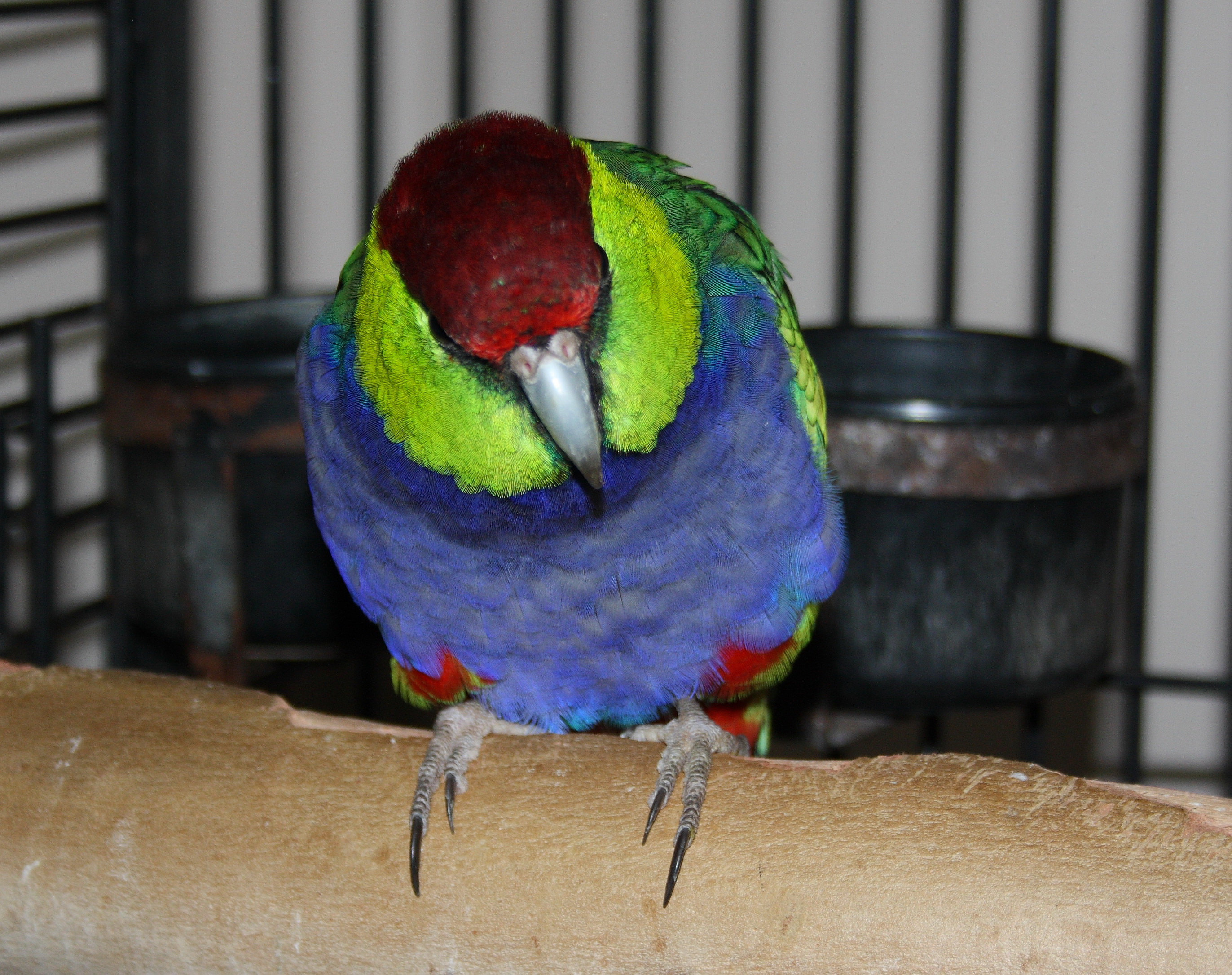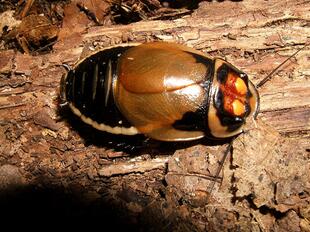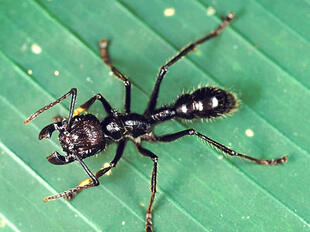
Red-capped parrot, orPileated parakeet(Purpureicephalus spurius)
Phylum —chordata
Class — aves
Order — psittaciformes
Family — psittaculidae
Genus – purpureicephalus
Appearance
The Red-capped parrot has a long bill and bright, clear patterned plumage, variously described as magnificent, gaudy, or clownishly colored. Measuring 34–38 cm (13.5–15 in) in length with a 42–48 cm (16.5–19 in) wingspan, and weighing 105–125 g (3.7–4.4 oz), the adult Red-capped parrot is a distinctive and easily recognized medium-sized parrot. The adult male has a crimson forehead and crown, which extends from the gape or base of the lower mandible through the eye and grey-brown lores. Its hindneck and cheeks are green, and its ear coverts are more yellow-green. In March and April, the crown feathers and ear coverts of birds with new plumage can have fine black edging. The feathers of the head, back and underparts, have grey bases that are generally hidden. The upperparts, including the wings, are dark green, the rump yellow-green, and the tail is green with a dark blue tip. The underparts are purplish-blue, the flanks green and red, and the iris dark brown with a dark grey eye ring. The bill is pale blue-grey with a dark grey tip, its upper mandible elongated to a slender hook.
The coloring of the female is similar to, though slightly duller than that of the male; the red of its plumage is not as intense and its red flanks are spotted with some green and yellow.
Juveniles have greenish plumage overall, before beginning their first moult around August. Their subsequent plumage much more closely resembles that of adult birds.
Habitat
The Red-capped parrot occurs in the Southwest Australia ecoregion in dense to open forest and woodland, and heathland in coastal regions.
Behavior
The parrots are found in pairs or small groups of 4 to 6 individuals, or occasionally in larger flocks of 20–30 birds. Rarely a flock of up to 100 birds may be encountered; these are generally composed of juveniles. The Red-capped parrot is shy, and often retreats to the upper canopy of trees if disturbed.
Diet
Its long bill is adapted to removing seeds from capsules of Eucalypts, particularly the Marri (E. calophylla). They also eat the seeds of other eucalypt trees, casuarinas, grevilleas, hakeas and grasses.
Reproduction
The breeding season is August to December. The Red-capped parrot needs mature trees large enough to have hollows in the trunk or branches. These trees can be on road verges, along water courses, or in paddocks, as well as forest or woodland. Nests are generally 50–100 m (150–350 ft) apart, and pairs defend them vigorously from other birds, particularly other Red-capped parrots, for the duration of nesting. The female incubates her clutch of usually five, occasionally six (records up to nine), milk-white eggs. The size of each almost spherical egg is 28 mm × 22 mm (1.10 in × 0.87 in). The male attends her from a nearby tree, signaling to leave the nest for food he has brought. Information on the incubation period is limited, but is between 20 and 24 days.
The nestlings are nidicolous—they remain in the nest initially, weighing 4–6 g (0.14–0.21 oz) at birth and gaining, on average, 4.1 g (0.14 oz) a day. At birth they are covered in white down, which is soon replaced by grey down. Their eyes open by 9–11 days of age, and primary quills appear by 9–15 days and primary feathers proper by 14–20 days. They are fed by the female alone for the first two weeks, then by both parents. They fledge between 30 and 37 days, generally all leaving the nest on the same day. The parents continue to feed them for another two weeks.
In captivity
They live up to 10-15 years in captivity.
The main threat for a Red-capped parrot is confined space. Avoid cramped or overly small cages as they can lead to a host of problems. What they need instead is plenty of space, room for free flight and exercise. For many owners, an aviary or a bird room are the best solutions for this, as this gives the bird a more natural environment. A Pileated parakeet will need an aviary, bird room, or a very spacious cage to thrive as a pet.
The main part of your Red-capped parrot pet’s diet will be seeds. A common commercial seed mix with oats, millet, and canary seeds, will be a great start. You can add some finely chopped green leafy vegetables such as chard, lettuce, sowthistle and chickweed.
These parrots enjoy bathing, so you will need to provide them with some overhead sprays, or bathing dishes. To help your pet adapt and socialize more, you should offer them various parrot toys to keep them stimulated and entertained.
These lively little parrots have maybe the best traits of all the grass parakeets. They boast a lovely temperament and a charming appearance. A pet Red-capped parrot will love to play and will show their energetic side during playtime – which comes with their slender size. In general, most owners will be surprised by the entertaining nature of these Australian parrots. As long as you provide good care and living conditions for your new pet, you can count on having a feathery friend for years to come!
 Russian
Russian
 English
English
























